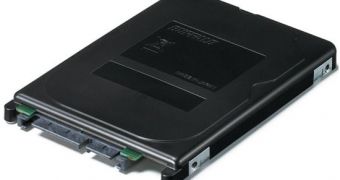All the talk about the shortages that the HDD market is going to experience within a couple of months led to speculations about possible SSD sales hikes but, apparently, this won't happen.
Not only do market watchers and analysts think solid state drive (SSD) sales will fail to pick up, but they see a significant likelihood of their prices falling as well.
To offer some context, the HDD market is in something of a bind because of the Thailand floods that shut down many of the facilities responsible for the worldwide supply of HDDs and components.
Currently, there are only two months of supply left and, though Seagate isn't directly suffering that much, Western Digital is.
Granted, some IT players, like AMD, believe the worries are a bit overblown, but they are there nonetheless.
One possible outcome is for solid state drives to skyrocket in terms of sales, especially since the HDDs that are left are growing in prices already.
However, it is now said that there is a lot less chance for this to actually happen.
In fact, DRAMeXchange noticed that NAND Flash chip prices declined during the second half of October, 2011, by 4-8%.
Though some might not believe it, demand for year-end retail sales was underwhelming at best, as was the one for high-density products.
The way smartphones and tablets sold less than expected, as did UFD and memory cards, didn't help the situation much either.
As such, even with the HDD inventory undersupplied until and through the first quarter of next year (2012), solid state drives, if anything, will keep selling less and even become less expensive because of it.
It is also worth mentioning that 20nm-class process technologies are already being used, which caused supply of MLC (multi-level cell) flash to rise much like DRAM supply did last year.

 14 DAY TRIAL //
14 DAY TRIAL //